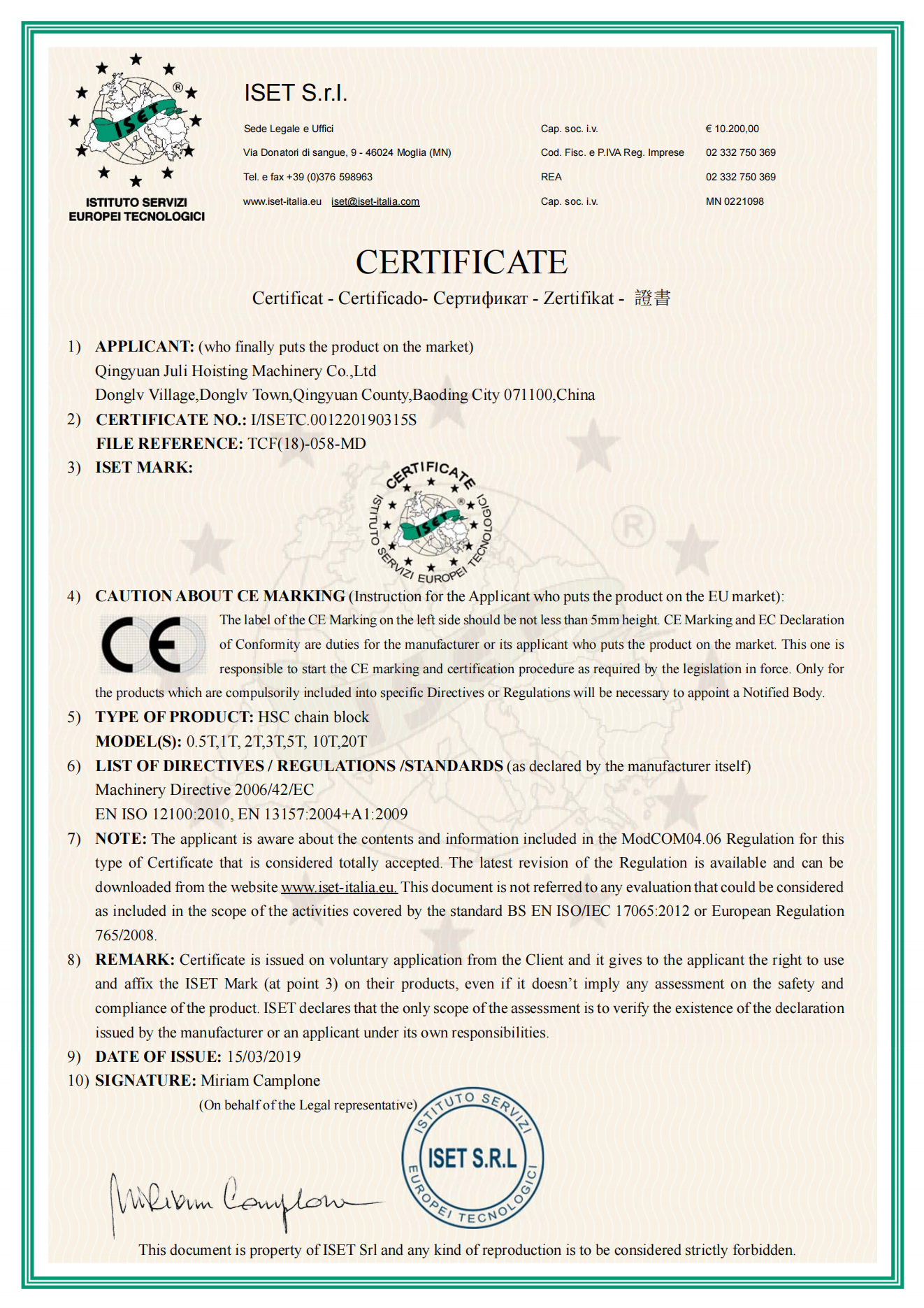


Understanding Chain Blocks and Lever Hoists Essential Tools for Lifting and Moving
In various industries, lifting heavy loads safely and efficiently is crucial. Two essential tools that have become staples in the realm of lifting equipment are chain blocks and lever hoists. Both devices are designed to make the task of lifting and moving heavy objects easier and safer, yet they have distinct features and applications that set them apart.
Chain Blocks An Overview
Chain blocks, also known as chain hoists, use a system of chains and gears to lift heavy loads vertically. The basic mechanism consists of a chain that wraps around a drum or wheel, engaged by a set of gears that amplify the force applied. When a worker pulls the chain, the load rises, and the system's mechanical advantage allows for the lifting of weights that would otherwise be unmanageable.
One of the primary advantages of chain blocks is their ability to handle substantial weights. Depending on the model, they can lift loads ranging from a few hundred kilograms to several tons. Their construction typically includes robust materials such as steel, which ensures durability and resistance to wear. Furthermore, chain blocks are generally portable, making them ideal for construction sites, warehouses, and factories where heavy lifting is a routine task.
Chain blocks also feature safety mechanisms, such as hook latches or safety catches, to prevent accidental release of the load
. However, their application is predominantly vertical, and they are suited primarily for lifting rather than moving loads horizontally.Lever Hoists Key Characteristics

Lever hoists, on the other hand, are different in operation and functionality. These devices utilize a lever mechanism that allows for lifting and pulling loads both vertically and horizontally. When the operator pulls on the lever, a ratchet and pawl system engages, lifting the load in a controlled manner without requiring continuous force. This design makes lever hoists particularly user-friendly, as minimal effort can yield substantial lifting power.
One of the significant benefits of lever hoists is their versatility. They are not only useful for lifting but also for pulling or positioning heavy loads with precision. This versatility makes them particularly valuable in applications such as rigging, towing, and in environments where space is limited. Like chain blocks, lever hoists are also made from durable materials that ensure longevity and reliability.
Lever hoists are typically lightweight and compact, making them easy to transport and maneuver. They also come equipped with safety features to prevent slippage and accidental disengagement, similar to those found in chain blocks.
Choosing the Right Tool
When deciding between a chain block and a lever hoist, it's essential to consider the specific requirements of the task at hand. If the job entails primarily vertical lifting and handling heavier loads, a chain block may be the better choice. Conversely, if the lift requires both vertical and horizontal movement or the load needs to be positioned precisely, a lever hoist would be more advantageous.
In conclusion, both chain blocks and lever hoists serve crucial roles in lifting and moving heavy loads effectively and safely. Understanding their functionalities, advantages, and limitations allows operators to select the appropriate tool for their specific needs, enhancing workplace safety and efficiency. Whether in construction, manufacturing, or logistics, these lifting devices remain indispensable for professionals across various sectors, facilitating the movement of heavy items with ease and precision.



